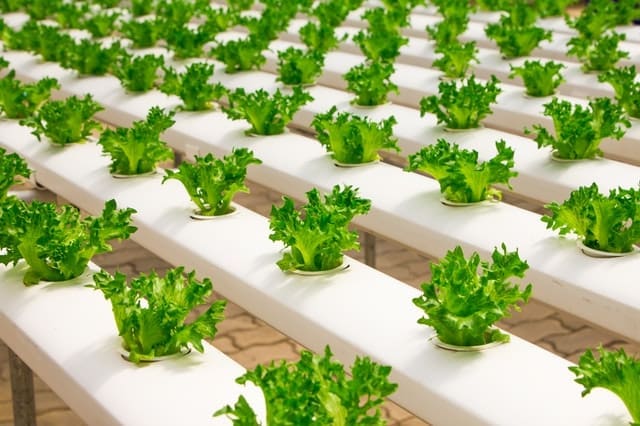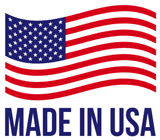
Filtering Water In Aquaponic Filter Systems
Aquaponics is a soilless planting technology relying on a symbiotic relationship between aquaculture and hydroponics to grow plants. The practice involves raising fish and other aquatic creatures to feed plants with the animal’s waste or discharge. Likewise, the plants contribute to the health and well-being of the aquatic creatures by filtering the water through their roots. The vegetables play a role in maintaining the quality of water before it returns to the tank or pond. Aside from the two working hand-in-hand, microbes living in the biological filtration system contribute to providing the necessary nutrients of the plants. The whole process is a perfect example of a symbiotic relationship between two different farming practices.
Why is Filtration Important?
Water filtration in aquaponics systems is vital in maintaining healthy fishes and other aquatic creatures. Since it is a symbiotic relationship, a farmer’s goal is to hit two birds in one stone.
Healthy Fish Tank Environment
An ideal environment for your fish and fish tank is free from contaminants, decaying organic matter, and excess food and waste. Polluted water will disrupt the delicate balance between fish and plant life, while clean, nutrient-rich water will promote keep the fish healthy and promote the health of the aquaponics system.
Optimal Plant Growth
Plants thrive on the beneficial bacteria and the nutrients found in fish waste. However, excess waste, especially solid waste, could disrupt this balance.
In short, maintaining good water quality will not only keep your aquatic animals healthy and thriving, but will also improve the growth and yield of your vegetables. You need a good filtration system to achieve your goals.
How to Choose An Aquaponics System
There are several types of aquaponics used today. Among the popular ones are the flood and drain, drip system, nutrient film technique or NFT, and the deep culture system. There’s no one-system-fits-all approach in aquaponics. You have to find what works best for you. You have to research and do your homework to find out the ideal system for your setup. Keep in mind, there are several factors to consider when deciding on which aquaponics system to use. Among these are the tank/pond placement and grow bed size and type. In some cases, it’s about the preference of the owner.
Types of Aquaponics Filtration Systems
Since you need good quality water for your plants and aquatic creatures, the water must be free of chemical contaminants. Heavy metals such as lead, mercury, and arsenic should never be in the water as it is a threat to animal and plant life. The water should not only be crystal clear but also clean and without impurities for both aquatic creature and plants to thrive.
Chemical Filtration Systems
Chemical filtration systems convert ammonia into nitrate, which is an acceptable form because it provides nutrients to the plants. In aquaculture, you can reduce the amount of ammonia, nitrite, and nitrate in your tank/pond through regular water change. Fortunately, you can save water with aquaponics since you won’t need frequent water changes as your plants will feed on the nitrate in the water.
Solid Waste Particles and Mechanical Filtration Systems
Mechanical filtration is the removal of solid waste such as feces and uneaten fish food through a series of filter media.
There are many filter media used to catch the debris to keep the water clear. Some people use DIY filter media to save money, while others use pre-made filter media to save time and effort.
Either way, it all depends on proper understanding of filter systems, correct setup, and regular inspection and maintenance. Some filter media like activated carbon catches impurities and contaminants like lead, chloramine, and other water pollutants. If you use private wells for your aquaponics, then you need to test the water for contaminants. You must also use activated carbon in your filter system to catch the pollutant before it reaches your tank/pond. Not all aquaponics filtration systems have activated carbon, though, since you don’t need one if you have a reliable water source.
Inlet Water Filters
Inlet water filtration like the AquaOx DF filters the water that goes through your tank/pond to keep your system clean and clear. The water doesn’t have to be murky to be contaminated. In most cases, the most dangerous pollutants are those that we can’t see with our eyes. An inlet water filtration will catch impurities and prevent them from causing health problems to our animals and plants. Most of these filter systems are easy to install and do not require technical skills. Unfortunately, they are often overlooked because of the filters used in the pond/tank. If you’re planning on starting your aquaponic garden, don’t forget to invest in a quality inlet water filtration to safeguard your farm and yourself.
Swirl Filters
Swirl filters are efficient in separating solids like fish poop and food, so they won’t get into the next filter chambers. A swirl filter usually has a gate valve to unload or release the collected debris at the bottom. Upon flushing, you have successfully reduced the waste in your aquaponics system through simple filtration. A raft water filter is a multi-layered filter system designed to catch residual of fish food and the poop of aquatic creatures as the water enters the filter chambers. The collected residue in the raft water filter must then be discarded to maintain good water parameters.
Raft Water Filters
Raft water filters separate solid waste particles from the fish tank by passing the water through several chambers with layers of foam. This filters solid waste effectively and disrupts the creation of aerobic zones that can be harmful for your aquaponics system’s ecosystem. However, these raft filters are often large and only suited to tanks that can comfortably accommodate them.
Radial Flow Filters
A radial flow filter directs water through a filter and radially into a baffle pipe, slowing down the flow of water enough to make the solid particles sink to the bottom, where they can be removed through a drainage valve. However, a potential weakness in this design is that sometimes not all the waste is removed by this single valve.
The Importance of Filtration in Aquaponics
As mentioned above, aquaponics is a combination of aquaculture and hydroponics, where both aquatic creatures and plants must sustain each other to thrive. Just like with any living organism, both aquatic creatures and plants must have a clean environment first to be healthy. Only when you have a clean environment and maintain good water quality can you successfully grow both.
Having too many fish or feeding your aquatic creatures cheap fish food can have many negative effects, but no matter what you feed to your aquatic creatures, they will eventually get sick if they’re housed in an unsanitary environment. Both mechanical and biological/chemical filtration are crucial to the success of your aquaponics. Since mechanical filters catch the larger debris and prevent them from returning to the pond, it is important that you clean your filter media to remove these solids.
Aside from the health and well-being of your fish and other aquatic creatures, a filter system will maintain clean, nutrient-filled water and prevent contaminants from entering the food supply of your plants. Filters prevent the eruption of disease because they keep the water parameters in check. In most cases, fish and plants get sick because of poor immune system function caused by bad water quality.
What to Grow
While you can grow anything, you should still do your homework on the best fish and plants to cultivate in your aquaponics system. The goal is to enjoy the soilless farming without stressing yourself due to the difficulty of caring for your fish and plants. If you have a small aquaponic based garden, you can grow vegetables that aren’t heavy feeders or dependent on heavy nutrient input. Among these are lettuce, mint, spring onions, spinach, and other small vegetables. Keep your choices on vegetables that do well in neutral pH level for your fish to thrive.
When it comes to aquatic creatures, you can grow fishes like tilapia, rainbow trout, goldfish, koi, shrimps, and even the small guppy. In choosing your fish, you must select a species that consumes a lot of food to produce ammonia that will be broken down into nutrients for your plants. The abovementioned aquatic creatures are popular among many aquaponics farmers around the world. Find out which fish are available in your area, as some of these might be hard to come by where you live.
Aquaponics Technology at its Best
Aquaponic farming is a revolutionary and organic way to grow plants and fish at the same time. It relies on water filtration to keep both living organisms healthy, safe and thriving. Since you can’t use chemicals such as pesticides on your plants, you’ll enjoy chemical-free produce that’s naturally self sustainable.






